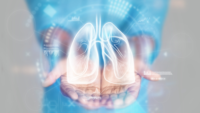Suicide is a leading cause of death in the United States, with more than 48,100 people losing their lives to suicide per year (National Institute of Mental Health, 2024). Death by suicide impacts subpopulations in the United States at varying degrees, and male and female nurses have a higher suicide rate than the general population (Davidson et al., 2020).
Among healthcare professionals, the nursing workforce is the largest (Smiley et al., 2023). Considering the positive impact that nurses make in the lives of their patients and the communities they serve, working as a nurse can be extremely fulfilling. Despite the fulfilling aspects, the work is very challenging, and system issues like staffing shortages, electronic health records, and a lack of support from leadership add to the mounting levels of burnout in nursing, which affect 56% of nurses (Berlin et al., 2023). When a nurse’s shift ends, they often do not have the energy left to provide the same level of care to themselves that they provide to their patients.
In addition to burnout, nurses report high rates of depression (26%), stress (66%), anxiety (46%), and substance use (18%); (American Nurses Foundation, 2023); Trinkoff et al., 2022). In a study with 2,281 healthcare professionals, a third of whom were nurses, positive screenings for burnout and co-occurring depression predicted greater suicide risk (Zisook et al., 2022). Unfortunately, only a small percentage of nurses will receive needed mental health services (Berlin et al., 2023; Kirzinger et al., 2021). Evidence-based suicide prevention strategies are urgently needed to better support our nurses.
Prevention Strategies
Institutionalize Wellness Cultures
Organizations that support the well-being of their employees and let them know they matter have better mental health outcomes. Nurses that feel supported at work are less likely to report burnout and depression than those who do not feel the same level of support (Melnyk et al., 2021, 2022). Creating and sustaining a wellness culture where nurses feel supported goes beyond providing one-off programs or trainings at an individual level. The entire organization must have wellness in its DNA, including in its mission statements, organizational policies, top leaders who invest in it and walk the talk, and employees who foster strong wellness cultures.
Chief Wellness Officers
Establishing a Chief Wellness Officer (CWO) at the C-Suite level is an evidence-based approach for initiating and maintaining organizational wellness cultures. By being positioned in a top leadership role, the CWO can more easily guide the organizational changes required to make living well the norm. The role must be well-resourced, as the CWO will be responsible for creating a team, a wellness strategic plan, and an evidence-based quality improvement approach to improve population health and well-being outcomes (Melnyk, 2023). The CWO leads well-being screening efforts within the organization to determine rates of burnout, professional satisfaction, and other relevant wellness outcomes. Results of screenings can be analyzed to determine where the organization can make improvements.
Wellness Programing
Two evidence-based wellness programs have made strides in decreasing depression, stress, anxiety, and preventing suicide in nurses: The Healer Education Assessment and Referral (HEAR) program and MINDBODYSTRONG©. HEAR educates nurses about the risk factors for mental health issues and anonymously screens nurses for the risk of suicide through the American Foundation for Suicide Prevention’s Interaction Screen Program (American Foundation for Suicide Prevention [AFSP], n.d.). see https://afsp.org/interactive-screening-program). HEAR has served 527 nurses, 17% of whom expressed suicidal ideation or prior suicide attempts (Davidson et al., 2020). These nurses were able to receive anonymous support from a therapist.
MINDBODYSTRONG© is a 7-week, manualized cognitive-behavioral skills-building program that can be delivered by non-mental health professionals or mental health professionals, making it more feasible for implementation. It has been extensively tested in nursing populations and significantly decreases depression and anxiety (Sampson et al., 2019, 2020). MINDBODYSTRONG© aligns with the National Academy of Medicine’s call for evidence-based solutions to decrease clinician burnout, depression, and suicide among healthcare clinicians.
A randomized control trial is taking place to test the impact of these programs combined, entitled the Modified Interactive Screening Program Plus MINDBODYSTRONG© (Melnyk et al., in press).
Reducing Stigma
Mental health stigma is alive and well in the field of nursing, and many do not seek help for fear of retribution. An audit of questions on U.S. nursing licensure applications found that 37 states asked overly invasive mental health questions (Melnyk et al., 2023). These questions are a driver of suicide and can lead applicants to avoid care for their mental health concerns (Schimmels et al., 2023). The Dr. Lorna Breen Heroes’ Foundation (n.d.) has created a toolkit (see https://drlornabreen.org/) to guide licensure application changes.
Leadership must let their nurses know that they matter and are valued. They also must tell their nurses that it is not a weakness to recognize when they need help when suffering from burnout and depression, it is a strength, and provide the necessary resources to support those who are suffering. All nurses should also know the 988 suicide and crisis hotline number where someone is available 24 hours a day to anonymously provide mental health support if needed. Ensuring the well-being of the nursing workforce through preventative measures is not a nicety, but a necessity.
References
American Foundation for Suicide Prevention. (n.d.). Interactive screening program. https://afsp.org/interactive-screening-program
Berlin, G., Burns, F., Hanley, A., Herbig, B., Judge, K, & Murphy, M. (2023). Understanding and prioritizing nurses’ mental health and well-being (Report). McKinsey & Company and American Nurses Foundation.
Davidson, J. E., Proudfoot, J., Lee, K., Terterian, G., & Zisook, S. (2020). A Longitudinal analysis of nurse suicide in the United States (2005-2016) with recommendations for action. Worldviews on Evidence-Based Nursing, 17(1), 6–15. https://doi.org/10.1111/wvn.12419
Dr. Lorna Breen Heroes’ Foundation. (n.d.). Fighting for the professional well-being and mental health of health workers. https://drlornabreen.org/
Kirzinger, A., Kearney, A., Hamel, L., & Brodie, M. (2021). KFF/The Washington Post frontline health care workers survey. Kaiser Family Foundation. https://www.kff.org/coronavirus-covid-19/poll-finding/kff-washington-post-health-care-workers/
Melnyk B. M. (2023). Improving population health and well-being in academic institutions and health care systems with the Chief Wellness Officer: A vital yet untapped nursing leadership role. Nursing Outlook, 71(6), 102058. https://doi.org/10.1016/j.outlook.2023.102058
Melnyk, B. M., Davidson, J. E., Mayfield, C., Zisook, S., Tucker, S., Hsieh, A. P., Cooper, A., Gray-Bauer, R., Hoying, J., Cuccia, A. F., & Tan, A. (in press). A study protocol for the Modified Interactive Screening Program Plus MINDBODYSTRONG© RCT: A mental health resiliency intervention for nurses. PLOS one.
Melnyk, B. M., Hsieh, A. P., Tan, A., Teall, A. M., Weberg, D., Jun, J., Gawlik, K., & behaviors, shift length, and workplace wellness support during COVID-19: Important implications for health care systems. Nursing Administration Quarterly, 46(1), 5–18. https://doi.org/10.1097/NAQ.0000000000000499
Melnyk, B. M., Tan, A., Hsieh, A. P., Gawlik, K., Arslanian-Engoren, C., Braun, L. T., Dunbar, S., Dunbar-Jacob, J., Lewis, L. M., Millan, A., Orsolini, L., Robbins, L. B., Russell, C. L., Tucker, S., & Wilbur, J. (2021). Critical care nurses’ physical and mental health, worksite wellness support, and medical errors. American Journal of Critical Care, 30(3), 176–184. https://doi.org/10.4037/ajcc2021301
National Institute of Mental Health. (2024, February). Suicide. https://www.nimh.nih.gov/health/statistics/suicide
Sampson, M., Melnyk, B.M., Hoying, J. (2019). Intervention effects of the MINDBODYSTRONG cognitive behavioral skills building program on newly licensed registered nurses’ mental health, healthy lifestyle behaviors, and job satisfaction. Journal of Nursing Administration, 49(10), 487-495. doi:10.1097/NNA.0000000000000792.
Sampson, M., Melnyk, B.M., & Hoying, J. (2020). The MINDBODYSTRONG intervention for new nurse residents: 6-month effects on mental health outcomes, healthy lifestyle behaviors and job satisfaction. Worldviews on Evidence-Based Nursing, 17(1), 16-23. https://doi.org/10.1111/wvn.12411.
Schimmels, J., Groh, C., Neft, M., Wocial, L., Young, C., & Davidson, J. E. (2023). American Academy of Nursing Expert Panel consensus statement on leveraging equity in policy to improve recognition and treatment of mental health, substance use disorders, and nurse suicide. Nursing Outlook, 71(3), 101970. https://doi.org/10.1016/j.outlook.2023.101970
Smiley, R. A., Allgeyer, R. L., Shobo, Y., Lyons, K. C., Letourneau, R., Zhong, E., Kaminski-Ozturk, & Alexander, M. (2023). The 2022 national nursing workforce survey. Journal of Nursing Regulation, 14(1), S1-S90. https://doi.org/10.1016/S2155-8256(23)00047-9
Trinkoff, A. M., Selby, V. L., Han, K., Baek, H., Steele, J., Edwin, H. S., Yoon, J. M., & Storr, C. L. (2022). The prevalence of substance use and substance use problems in registered nurses: Estimates from the Nurse Worklife and Wellness Study. Journal of Nursing Regulation, 12(4), 35-46. https://doi.org/10.1016/S2155-8256(22)00014-X
Zisook, S., Doran, N., Mortali, M., Hoffman, L., Downs, N., Davidson, J., Fergerson, B., Rubanovich, C. K., Shapiro, D., Tai-Seale, M., Iglewicz, A., Nestsiarovich, A., & Moutier, C. Y. (2022). Relationship between burnout and Major Depressive Disorder in health professionals: A HEAR report. Journal of Affective Disorders, 312, 259–267. https://doi.org/10.1016/j.jad.2022.06.047


















